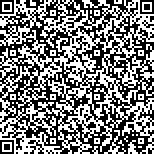| 本文已被:浏览 49次 下载 13次 |

码上扫一扫! |
|
|
| 基于网络药理学和分子对接初探柔筋胶囊治疗脑卒中后遗症的机制 |
|
张哲祚1,2, 何丽云1, 苏同生3, 宋瑞3, 李洪皎1, 白菁安1, 张艺梁4, 吕晓颖1
|
|
1.中国中医科学院中医临床基础医学研究所, 北京 100700;2.南京中医药大学, 南京 210023;3.陕西省中医医院, 西安 710003;4.瑞士中医药大学, 巴德-祖赫扎 5330
|
|
| 摘要: |
| [目的] 运用网络药理学和分子对接技术初步探究柔筋胶囊(简称RJC)治疗脑卒中后遗症的机制及通路的可能性。[方法] 利用中药系统药理学数据库与分析平台(TCMSP)和中药分子机制的生物信息学分析工具(BATMAN)数据库筛选RJC的有效成分,并于有机小分子生物活性数据库(PubChem)中检索简化分子线性输入规范(SMILES)标识。用瑞士靶点预测(SwissTargetPrediction)数据库预测得到RJC有效成分的靶点基因,通过基因卡片(GeneCards)、疾病基因网络(DisGeNET)数据库获取脑卒中及其后遗症症状靶点,三者交集得到药物作用于疾病的潜在靶点。使用基因、蛋白质相互作用关系检索工具(STRING)数据库和Cytoscape3.10.1软件进行蛋白互作(PPI)网络分析与构建,利用注释、可视化和综合发现数据库(DAVID)进行基因本体(GO)富集分析、京都基因与基因组百科全书(KEGG)通路富集分析。最终运用Cytoscape3.10.1软件构建中药-活性成分-核心靶点-通路网络。此外,利用Autodock Vina软件将度值排名靠前的有效成分和蛋白质标靶进行分子对接,对网络药理研究结果进行验证。[结果] RJC有效成分44个,主要活性成分有山柰酚(kaempferol)、熊竹素(Jaranol)等,与疾病靶点交集获得79个可能靶点,其中核心靶点为丝氨酸/苏氨酸激酶1(AKT1),表皮生长因子受体(EGFR),前列腺素内过氧化物合酶2(PTGS2),激酶插入结构域受体(KDR),内瘤素病毒蛋白(SRC)等。GO富集分析结果显示,存在325条生物过程,66类细胞组分和76组分子功能。KEGG富集到122条信号通路,RJC治疗脑卒中后遗症可能通过磷脂酰肌醇3-激酶-蛋白激酶(PI3K-AKT)信号通路、丝裂原活化蛋白激酶(MAPK)信号通路、阿尔茨海默病相关通路等发挥作用。分子对接结果表明,各组分与其核心靶标具有很强的结合能力。[结论] RJC可能通过AKT1、EGFR、PTGS2、KDR、SRC等核心靶点,以及调控PI3K-AKT信号通路、MAPK信号通路,减少神经元凋亡,促进神经干细胞的增殖和分化,缓解脑部炎性反应和氧化应激反应,说明了RJC对治疗脑卒中后遗症具有多成分、多靶点、多通路的特点。 |
| 关键词: 脑卒中后遗症 柔筋胶囊 网络药理学 分子对接 作用机制 |
| DOI:10.11656/j.issn.1673-9043.2025.03.05 |
| 分类号:R255.2 |
| 基金项目:国家科技重大专项课题项目(2017ZX10106001);中国中医科学院课题项目(ZCOO1-16,2023018-214122,201804)。 |
|
| Exploring the mechanism of the Roujin Capsule in treating sequela of stroke based on network pharmacology and molecular docking |
|
ZHANG Zhezuo1,2, HE Liyun1, SU Tongsheng3, SONG Rui3, LI Hongjiao1, BAI Jingan1, ZHANG Yiliang4, LYU Xiaoying1
|
|
1.Institute of Basic Research in Clinical Medicine, China Academy of Chinese Medical Sciences, Beijing 100700, China;2.Nanjing University of Chinese Medicine, Nanjing 210023, China;3.Shaanxi Provincial Hospital of Chinese Medicine, Xi'an 710003, China;4.Swiss Traditional Chinese Medicine university, Bad Zurzach, 5330, Switzerland
|
| Abstract: |
| [Objective] This study aimed to explore the possibility of the mechanism and pathway of Roujin Capsule(RJC) in the treatment of stroke sequelae by network pharmacology and molecular docking technology. [Methods] The active ingredients of RJC were screened by using the Traditional Chinese Medicine System Pharmacology(TCMSP) and Bioinformatics Analysis Tool for Molecular mechANism of Traditional Chinese Medicine(BATMAN) database. Simplified Molecular Input Line Entry Systems(SMILES) were obtained by using PubChem. Target genes were predicted by using SwissTargetPrediction database and the target of action of RJC active ingredients were identified. Targets related to ischemic stroke were found from GeneCards and Disease Gene Network(DisGeNET) database,with the potential targets of drug action on disease intersected. After obtaining the intersection from these two datasets,the Search Tool for Retrieval of Interacting Genes/Protein(STRING) database and Cytoscape 3.10.1 were used to analyze the protein-protein interaction(PPI) network of the active ingredients and candidate genes. The candidate genes were imported into Database for Annotation, Visualization, and Integrated Discovery(DAVID) for Gene Ontology(GO) functional analysis and Kyoto Encyclopedia of Genes and Genomes(KEGG) pathway enrichment. The "Durg-ingredients-target-pathway" network were mapped using the Cytoscape3.10.1. In addition,Autodock Vina software was applied to make molecular docking between active ingredient and protein target to verify the results of network pharmacological research. [Results] There are 44 active ingredients in RJC,among which kaempferol and Jaranol are the top two in degree values. The 79 potential targets were obtained by intersecting with disease targets,including Serine/Threonine Kinase 1(AKT1),Epidermal Growth Factor Receptor(EGFR),Prostaglandin Synthase 2(PTGS2),Kinase insert Domain Receptor(KDR),Sarcoma(SRC) and other potential core targets. The GO enrichment analysis results turn out 325 biological processes,76 cell components and 76 molecular functions. KEGG is enriched in 122 signaling pathways,and RJC may play a role in treating sequelae of stroke through PI3K-AKT signaling pathway,MAPK signaling pathway,relaxin signaling pathway,cancer pathway,etc. The molecular docking results indicate that each component has strong binding ability to its core target. [Conclusion] RJC may regulate the PI3K-AKT signaling pathway and MAPK signaling pathway through core targets such as AKT1,EGFR,PTGS2,KDR and SRC,reduce neuronal apoptosis response,promote proliferation and differentiation of neural stem cells,relief inflammatory,oxidative stress in the brain,and have a certain therapeutic effect on treating sequelae of stroke. |
| Key words: sequela of stroke Roujin Capsule network pharmacology molecular docking analysis mechanism |
